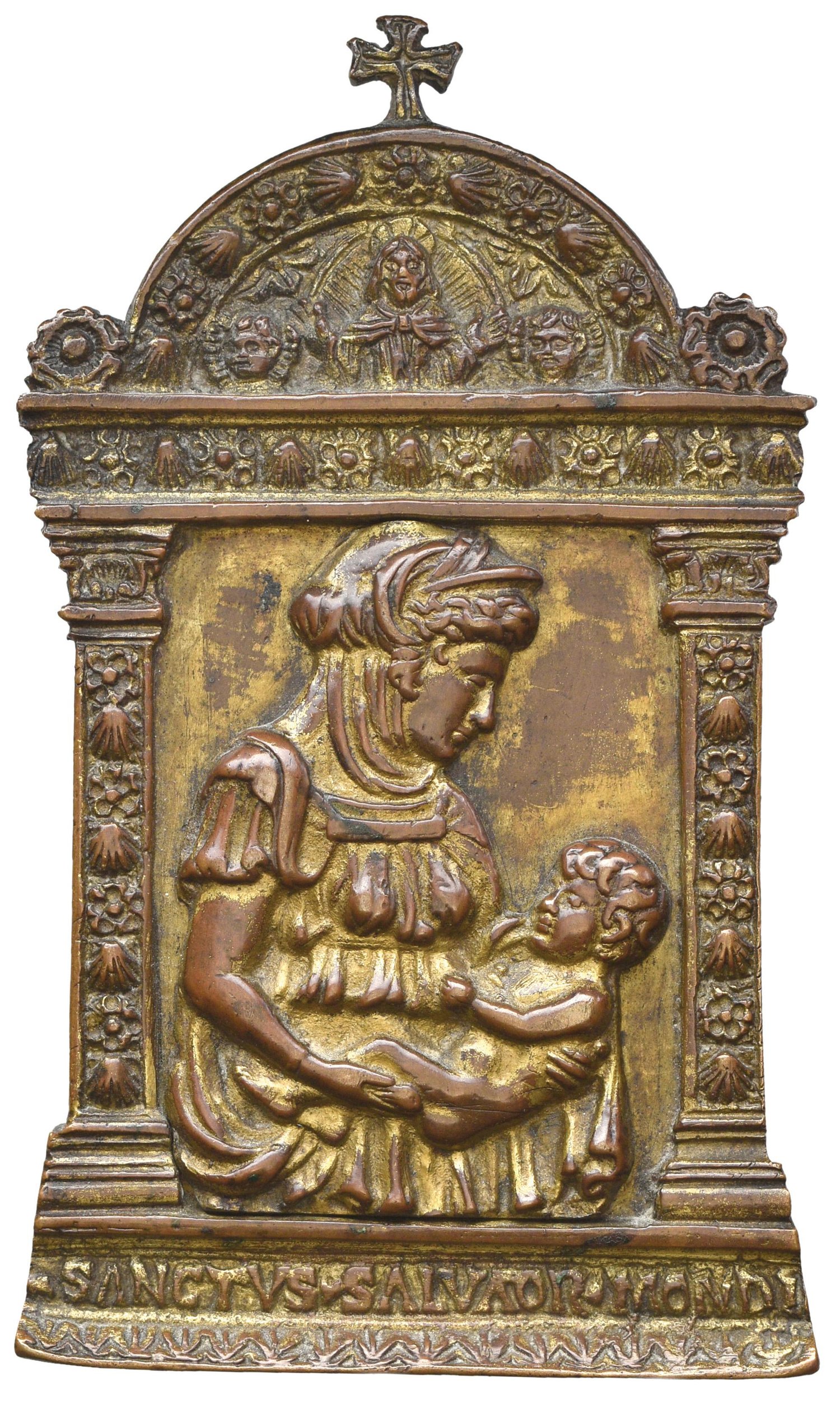$2,790.00
15th century gilt bronze pax of the Virgin and Child, after Donatello
Anonymous, school of Donatello
Second half of the 15th century; Northern Italy
Approximate size: 13 x 7.6 cm
The present relief of the Virgin and Child is largely considered derived from either a lost model by Donatello or perhaps inspired in close proximity with his creation of the Piccolomini Madonna in Siena. The relief plaquette itself was widely dispersed and more than three dozen examples survive in various private and public collections. The present example, formed as an applique, is a later debased variant of the original composition but its motif is reproduced variably on other paxes and was later used also as a model for bell founders where the motif is featured on productions from the workshop of Giulio and Ludovico Bonaventurini and the foundry of Giuseppe de’ Levis during the late 16th and early 17th centuries. It is copied on a relief dated 1511 on the façade of the Ospedale dei Poveri Sarti in Venice and the motif is also copied, at an early date, ca. 1530-40, on a footed maiolica dish from the Gubbio.
The art historian John Pope-Hennessy described this relief to be ‘of great distinction’ while the scholar Jeremy Warren commented on it as ‘one of the most beautiful of the small reliefs of the Virgin and Child associated with Donatello.’
The separately cast, although contemporaneously produced frame for the pax is certainly an old model of the late 15th century. It’s base features the inscription: SANCTVS SALVATOR MONDI (Savior of the world). The integrally cast lunette features God the Father flanked by a pair of putti. The columns, lunette and entablature feature an alternating pattern of shells and rosettes.
An example of this frame, featuring a relief of the Resurrection of Christ by Moderno, in the collection of Mario Scaglia, features an inscription on its reverse: ROME 1504, indicating a terminus ante quem for the frame’s existence. Francesco Rossi suggests the frame has its origin in the Veneto which seems a probable location for the facture of the present pax.
